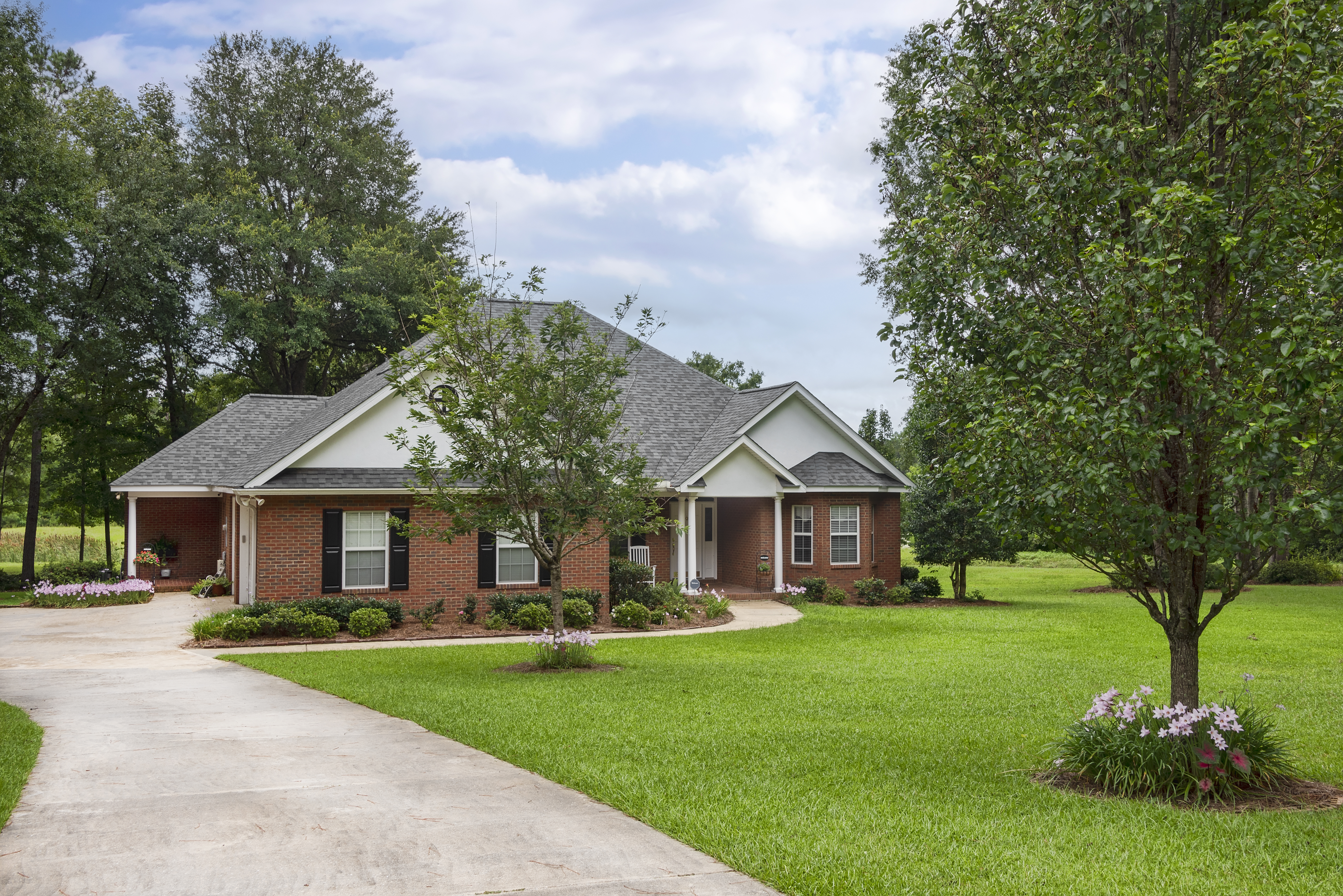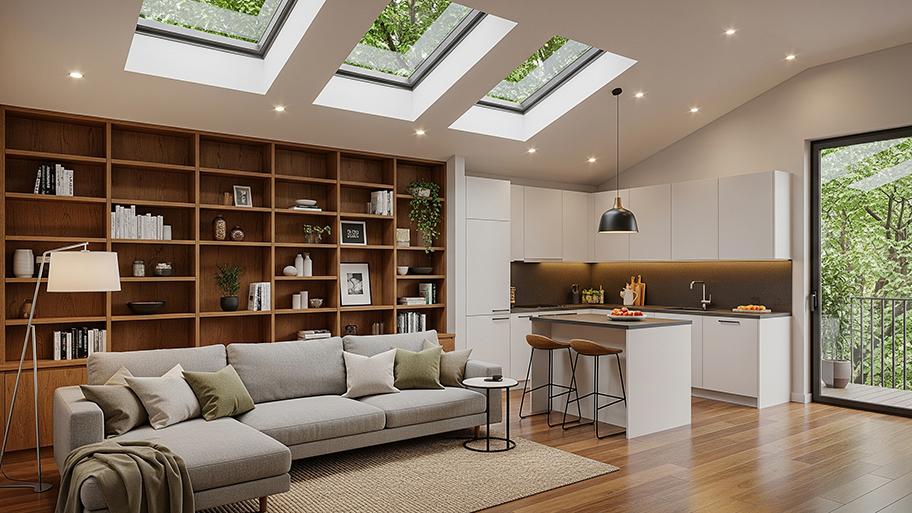
Window replacement enhances your home's appearance and helps to maintain a consistent indoor temperature. Discover the cost of window replacement in Columbus.
To grid or not to grid


Window grid style follows your home style, so if you’re unsure what you want, go with what matches your home.
Grids help provide a nice curb appeal, but they block some sun and views of the outdoors.
Removable window grids are a great option for homeowners who aren’t sure if they want them or not.
Choosing the type of windows you want installed and deciding on window placement can be challenging enough, but you’ll also need to decide if you want grids or no grids for your windows. Learn about the pros and cons of window grids and what to consider before installing windows in your home.
Window grids are the small lattice-like components that sit on the panes of glass in your window. They break up the appearance of the glass and create the illusion that the single large pane is made up of multiple smaller panes.
There are a variety of window grid patterns you can use to accentuate your home’s style. You can even go gridless—it all comes down to personal preference.
There are a few upsides to choosing window grids:
Curb appeal: One of the biggest benefits of window grids is that they improve curb appeal and can add more value to your home. This is especially true if you match your grids to your home style or the type of window frame you have.
Customization: Window grids come in many different patterns, shapes, and designs, providing an opportunity to make your home stand out from the rest of the neighborhood or fit in nicely.
Security: Windows are an important stress point when it comes to home security. Window grids add another barrier to entry, making your home less enticing to burglars.
Historical accuracy: If your home is a historical landmark or in a community where you must maintain historical accuracy with any renovations, window grids are often a necessity, especially with Victorian homes and older Colonial homes that traditionally had distinctive window grid patterns.
Of course, there are some downsides to choosing window grids, such as:
Impeded views: Window grids leave most of the window unblocked, but they do get in the way of any views of nature you enjoy. For example, coastal and lake houses often have large picture windows with no grids to maximize views.
More challenging to clean: Cleaning around grids is more involved and time-consuming than cleaning a flat pane of glass.
More expensive: Of course, the more material that goes into your window, the more expensive it will be upfront and to replace your window frames and grids. Window grids come with their own cost, especially if you choose a custom design.
Ongoing maintenance: Over time, window grids can break or fade from exposure to the sun and need replacement, which is another ongoing cost to consider.

Whether or not window grids are right for you depends on a few things, like your home’s style, location, and window type.
The style of your home will sometimes dictate if window grids would look good or out of place. For example, a Colonial grid pattern won’t match the aesthetic of a Victorian house, a farmhouse grid style won’t compliment a Colonial home, and modern homes look best with gridless windows.
Another easy way to decide between grids or no grids on windows is to look at your other windows if you’re just replacing one and at other homes in the neighborhood. Aim for some level of consistency among your own windows—by matching grid patterns on other windows or your frame and window capping material—and with the surrounding properties.
A single window with Victorian-style grids will look out of place in any home with predominantly another style, and modern-looking gridless windows might seem out of place in a neighborhood filled with Colonials with Colonial grid patterns.
Think about the surrounding area and your potential views. If a side of your home faces some kind of natural beauty, like a lake, forest, mountain, or beach, consider gridless windows on that side to make sure the view is unimpeded.
The size of your window can help you determine what grid pattern would look best. Large windows benefit most from patterns that don’t break up the glass into many smaller pieces, like the Colonial pattern. Small windows might be prime candidates for no grids at all.
Your window type can also dictate what grid pattern would look best. For example, casement and picture windows are great places to include a prairie grid pattern, but the same pattern would look strange on a double-hung or single-hung window.
Most window manufacturers offer window grids in different colors for more customization. You can add a pop of color to complement or contrast the outside or inside of your home.
After you decide whether or not you want window grids, you’ll need to decide on a pattern. This will affect your curb appeal and the overall cohesiveness of your home. We’ll explain the grid pattern options below.
You have three primary types of window grids to choose from:
Simulated divided lites (SDL): These include grids permanently bonded to the inside and outside of the glass to divide it into smaller panes. They include a metal grid between the glass for added support and to improve the appearance.
Full surround (FS) grilles: Full surround grilles are mounted to the interior of the glass. They’re less secure and don’t look as convincing as SDLs, but they’re removable and easier to clean.
Grilles between the glass (GBG): Putting grilles between the glass involves mounting grids between the panes of glass on a double-pane or triple-pane window. This leaves you with a single glass surface to clean, making your maintenance easier.
Window grids are available in different thicknesses and with different patterns routed into them. Flat, chunky grids are best for farmhouse windows, while thicker, more ornate double-roundover patterns are more appropriate for Colonial-style windows.
Finally, you should consider removable grids for your windows. These don’t add much in the way of security, but they do make your windows far easier to clean, and you can remove them if you ever change your mind about grids.
There are eight main window grid styles you’ll have to choose from:
Traditional/Colonial: This style splits the entire window into smaller, even squares or rectangles that are taller than they are wide.
Prairie: The prairie grid style leaves most of the window unobscured but has grilles along the perimeter of the glass. This creates four small faux panes in the corners of the window. Variations on this style include additional larger panes in the center of the window.
Craftsman: This style leaves the bottom half or so of the window without grids for partially clear views of the outdoors while the top is separated and divided into a few smaller faux panes.
Victorian: Victorian grids include arches to match the shape of the windows in Victorian-style homes.
Diamond: Diamond grids include diagonal grilles that intersect to create diamond-shaped panes. These are most common in Colonial homes.
Farmhouse: Farmhouse window grids are chunky and minimalist, dividing the glass into four equal window parts. The grilles themselves are often thick and flat rather than ornate.
Gridless: Of course, gridless is always an option if you want clear outdoor views or a more modern home design.
Custom: Finally, some window companies near you can make and install custom grid designs, so you can get any style you want.
From average costs to expert advice, get all the answers you need to get your job done.

Window replacement enhances your home's appearance and helps to maintain a consistent indoor temperature. Discover the cost of window replacement in Columbus.

Window repair costs in Columbus, Ohio, depend on several pricing factors, including the type and size of the repair it needs and the window itself.

Garden windows can be a great addition to your kitchen, adding light and a place to grow plants. Costs depend on material, size, and customization—learn how much you can expect to pay.

This guide explains when money-saving handyman window repairs are appropriate and when it’s best to leave the job to a window specialist.

Not sure how to protect skylights from hail? We’re breaking down how you can DIY your way to a safer home by ensuring hail doesn’t damage skylights.

Understanding standard window sizes is easy once you get the hang of it. Here's how to order windows just like the pros.